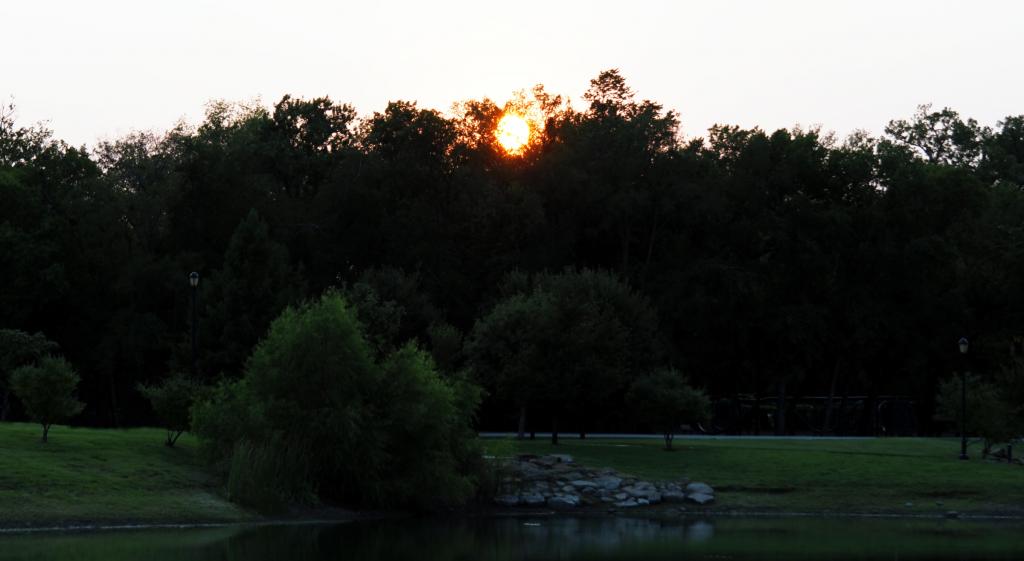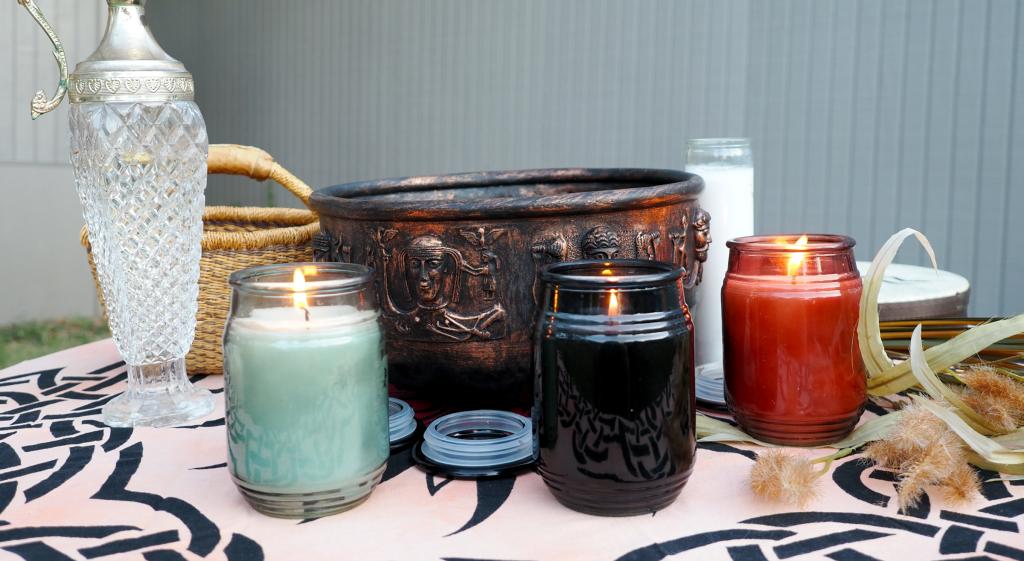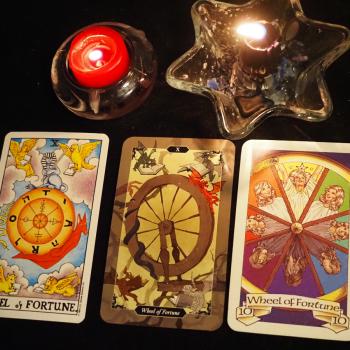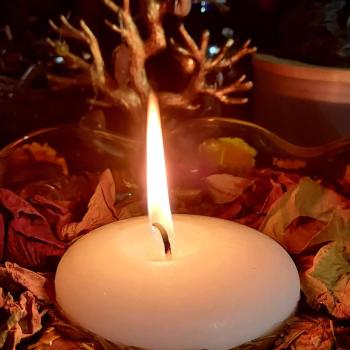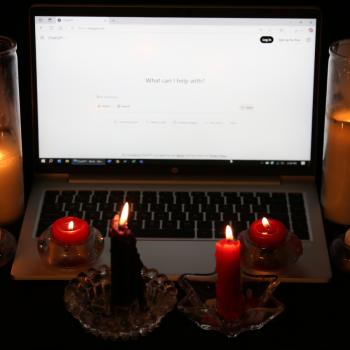Last month I wrote Presenting Paganism to a Generation of Spiritual Explorers, where I asked “how do we welcome those who expect to make their own guidelines?” In the post, I quoted from a study by the Springtide Research Institute, who studies the religious and spiritual lives of 13 to 25 year-olds in this country.
Last week Springtide contacted me and I had a very nice conversation with Dr. Josh Packard, their Executive Director. Dr. Packard has a Ph.D. in sociology from Vanderbilt – he and his institute are doing serious research using a combination of surveys, focus groups, and in-depth interviews.
Their findings are important. You can like them or you can not like them, but if you’re a religious leader (in any sense of the term) you ignore them at your peril. They provide good insight into the beliefs and practices of young people – the people who are the future of Paganism, of Christianity, and of every other religion in this country.
39% identify as “none of the above”
This is simply unprecedented.
Throughout history, the vast majority of people have followed the religion of their parents and their parents before them. They may have followed it less devoutly (or more devoutly) but they still identified with the religion of their childhood. A few converted, but they usually converted to another branch of the same religion (such as Catholic to Evangelical, or vice versa).
But now, almost four out of ten young people describe their religious identity as “none of the above.” They aren’t staying in their parents’ religion and they aren’t converting to another religion.
They won’t take anyone’s package deal. Rather, they’re trying to build their own package of beliefs and practices – what makes sense to them, and what works for them.
“None of the above” doesn’t mean atheism
Young people are abandoning beliefs and practices that don’t make sense to them, or that offend their innate sense of right and wrong. Some are becoming atheists. But for most, it’s what Dr. Packard calls “faith unbundled.”
(Like many Pagans and other non-Christians, I have an issue with saying “faith” when what you mean is “religion” – religion is a lot more than what you believe. But it’s clear what Dr. Packard means when he says this, and in the interview he followed that comment with “religion unbundled.”)
Young people aren’t abandoning religion – they’re abandoning religious institutions. Some of this is the fault of institutions that cling to outdated cultural norms and insist they’re eternal truth. But much of it is the fact that so many different religions are available – we live in the most religiously diverse culture in the history of humanity. And so young people – and some not-so-young folks too – are trying to build a set of beliefs and practices that make sense to them.
This isn’t all that different from what I’ve done on my spiritual journey. But where I’m an outlier as a late Boomer (who really belongs in Gen X), this DIY religious approach has become quite common among younger people.
Not this or that – this and that
Most religions draw clear lines around what are and aren’t acceptable practices. Today’s young people are ignoring those lines. That was the theme of Heather Greene’s Religion News Service article on Gen Z and Tarot that inspired my post last month. They’re reading the Bible and they’re working with crystals.
This is a problem for institutional religions. Over on the Patheos Evangelical channel, Roger Olson (one of the few Evangelical bloggers I enjoy reading) has a new post where he looks at this phenomenon. Unsurprisingly, he’s against it. Christianity in general and Evangelicalism in particular have always condemned divination, even though ordinary Christians have always practiced it, to one degree or another. But they no longer have the power to enforce their doctrines – either with governmental authority or social pressure – and so people are largely ignoring them.
Humans have always been rather utilitarian around religious practices – if something works, we’ll do it. If not, we’ll abandon it. But most people have been constant when it comes to their religious identity. Now that’s changing.
The impact of social media
According to the Springtide research, families remain the #1 influencer of young peoples’ religion. But social media is #2.
To say this concerns me would be a gross understatement. For all that I enjoy the social aspects of social media, and for all I appreciate finding information I would otherwise never see, I’m worried about the vast amounts of misinformation circulating around the internet.
Then again, those of us who learned our craft from the shelves of Barnes & Noble remember that for every helpful book that became a classic, there were several more that were filled with wild conjecture pretending to be ancient lore (like much of Edain McCoy’s work).
And let’s not forget that the Christian shelves were – and still are – full of fundamentalism and other bad ideas that are far more harmful than any Pagan fabrication.
We learned to separate the wisdom from the garbage – the younger generations can learn to do that too. Our job is to present good, accurate, helpful information for those who want it.
From binding together to gathering around?
I keep repeating this because it’s important: the English word “religion” comes from the Latin word religare, which means “to bind together.” Religion provides the common beliefs and practices that make us a tradition and a community, rather than simply a collection of individuals.
What binds us together when everyone is doing their own thing? Religiously, that answer is “not much.”
But there are things we can gather around. We see this in the Pagan community with those who don’t give the Gods much thought, but who love celebrating the changing seasons. There is no creedal test to dance the Maypole.
I can gather with all kinds of people to discuss Tarot, even though as an animist and a polytheist I have very different ideas about how it works compared to those who approach it from a New Age, non-theistic, or even a Christian perspective.
Will these interest-group gatherings build the kind of communities that will last for many generations? No. Communities will have to be built around something else, and I don’t know what that is.
But how many people have stayed in a religious community long after they’ve abandoned any religious practices? Perhaps what we’re moving toward is simply a more honest approach.
Looking for a conversation
Paganism is not a proselytizing religion. We don’t pretend we have the One True Way. And that’s a good thing. Because the Springtide research shows that young people are turned off by “hard sell” approaches.
Instead, they’re looking for a conversation. They want to know what you believe, what you do, and why that’s meaningful and helpful to you. They want you to hear their ideas and their concerns.
That means we have to listen. And it means we have to be very careful how we respond. They may be young, but they have no trouble recognizing rote answers grounded in arbitrary authority.
Dr. Packard says “you can’t win, but you can lose.” Give them a hard sell, tell them they have to believe something they know isn’t true, and they’ll write you off.
And you’ll deserve it.
Staying in the conversation
For those of us who care deeply about our religions, our traditions, our beliefs, and our practices, this becomes our goal: staying in the conversation.
With 6 in 10 choosing a specific path, our many religions are in no danger of immediate collapse. But with 4 in 10 choosing “none of the above” those religions’ long-term survival is by no means assured. Our religions will not survive and grow based on internal reproduction. We all have to make our case to each generation.
On one hand, I worry about timeless virtues and values being ignored in favor of whatever is popular at the moment. I worry about sacred practices losing context and meaning when partialed out individually. I worry about the institutions that sustain religions losing critical mass and leaving us all to fend for ourselves.
But when I consider how many institutions seem more interested in protecting the institutions than in caring for its followers (see the sexual abuse scandals across many religions), and how many use their platforms to promote harmful ideas (see fundamentalisms of any variety) I can’t say this is the wrong approach.
Like it or not, religion is becoming an individual thing. We’ve been moving in that direction for most of my lifetime, and the current generation is making it a common practice.
We need to make sure we stay in the conversation.
Springtide’s 2021 report on young people and religion is titled “Navigating Uncertainty.” It’s due out in late October. It will be free on the Springtide website for those willing to sign up for their mailing list. Or you can order printed a copy from Amazon.


